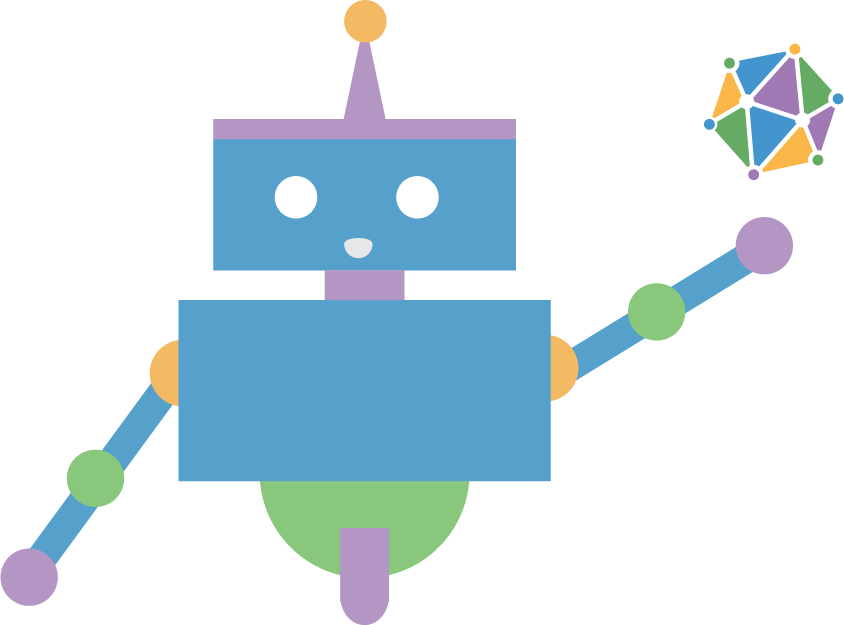Explore
If you haven’t checked out the discover page make sure to start there!

Welcome to the Program C.I.T.Y. Digital Library! Here you can explore the “behind-the-scenes” of immersive technology and try creating some of your own digital experiences. Each module is centered around a different area of immersive technology and contains video guides and resources to help you get started. Bring the excitement of technology discovery to life anytime, anywhere.

Have you discovered 3D yet ?
If you missed it, check it out here!
Here you can learn how to create 3D model
Whether it is on the big screen or in your favorite video game, 3D design is the first step in the development process when bringing immersive worlds to life. So, what exactly is 3D Design? 3D design is the process of using computer-modeling software to create an object within a three-dimensional space. This means that the object itself has three key values assigned to it in order to understand where it exists within the space: x-axis (horizontal), y-axis (vertical), and z-axis (depth). Understanding these variables allows you to determine where your 3D-built object can be moved and rotated within the space, giving it a similar perspective to what you are used to seeing in the real world. You can read more about 3D Design definitions and principles here.
In this guide, you will explore how to design and create your very own 3D models using Tinkercad and Blender. At the end of this module you will be able to:
Navigate the 3D program interfaces of Tinkercad and Blender.
Following these link takes you out of our site and to a third party site.

Have you discovered 360-degree videos yet?
If you missed it, you can check it out here!
Here you can explore how to create 360 Videos
It is more than likely that you’ve watched a video online before. Most of these videos are filmed with standard cameras that capture footage in the direction they are pointed. Once they are uploaded online the steps for watching these videos are just as straightforward: click play, sit back, & enjoy! However, there is a new kind of video technology that is offering a totally immersive viewing experience. Swim with sharks in the Pacific Ocean, ride the world’s fastest rollercoaster, or tour Fresno State’s campus all from the comfort of your own home with 360 videos. 360 videos are created using a special omnidirectional camera that records footage in all directions giving you a complete 360-degree view. These videos can be viewed on a computer or smartphone as you normally would, but for a truly immersive experience, all you need is a smartphone device, VR cardboard, and 360 videos! Let’s explore how these awesome, and widely accessible, immersive experiences are created.
In this guide, you will explore the technology behind creating 360 videos and how to upload them to Youtube.

Have you discovered Augmented Reality (AR) yet?
If you missed it, you can check it out here!
Explore how to blend the digital and real World with Augmented Reality
Using silly filters on Snapchat, catching a Charizard at the park with Pokemon Go, and using the IKEA Mobile App to see how that new coffee table will look in your living room are just a few examples of how technology can be used to blend the digital world with the real world to create an immersive and interactive experience. But how do Snapchat, Pokemon Go, and IKEA bring their digital content to life? The answer is Augmented Reality. Augmented Reality, commonly referred to as AR, is an immersive experience created by overlaying digital content into the physical world. AR works by mapping 3-dimensional virtual objects onto a real environment using computer vision. Computer vision is the programming that enables the computer to identify and process what the camera sees. We use computer vision to make sense of the 3D environment (real world) and place the digital features (digital world) within it. Today, AR is used in many different industries such as gaming, manufacturing, retail, healthcare, and education, and that’s just to name a few! See Augmented Reality in action with the AR Language Book.
Create your own AR Experience with Adobe Aero!
Create your own AR Experience with ZappAR!
Following this link takes you out of our site and to a third party site.

Have you discovered Virtual Reality (VR) yet ?
If you missed it, you can check it out here!
Explore how to create your own Virtual Reality scene
We’ve covered how 360 videos offer immersive video-viewing experiences in an earlier module. Now, let’s take a look at an immersive AND interactive digital experience – Virtual Reality. Virtual Reality, referred to as VR, is a simulated 3D environment that allows users to explore and interact with the virtual surroundings in a way similar to how you would explore and interact with a real-world environment. VR scene imagery can be built using photography, film, or it can be completely computer-generated (CGI) giving VR designers the creative freedom to build just about any kind of world. With VR anything is possible! But VR isn’t just used for creating fantastic, otherworldly digital environments, you can find VR used in many different industries to improve business practices, enhance training exercises, and creatively solve problems. In the architecture industry, architects use VR technology to help clients visualize and experience a conceptual space before ground is broken and in the medical field VR technology is used to enhance research methods and simulate medical emergencies for training exercises. Today’s advancements in VR technologies and software have the potential to transform how we play, work, learn, communicate, and experience the world around us.
Following this link takes you out of our site and to a third party site.

Have you discovered Extended Reality (XR) yet ?
If you missed it, you can check it out here!
Explore how to make your very own XR environment
In the previous modules, we took a look at Augmented Reality and Virtual Reality and all the amazing things they can do. What would happen if you blended both these technologies into one experience? You get Mixed Reality. In Mixed Reality, referred to as MR, digital and real-world objects co-exist and interact with one another in real time. MR allows you to see and immerse yourself in the world around you even as you interact with a virtual environment – without ever needing to remove your headset. For our purposes we will be using the term Extended Reality, referred to as XR, as an umbrella term that covers AR, VR, & MR. This new extended reality is made possible through advancements in computer vision, graphical processing, display technologies, input systems, and cloud computing. XR technology and equipment are continuing to evolve and advance providing new tools and solutions for many different industries. From better customer experiences in retail to state-of-the-art training for first responders, XR is becoming more relevant and available wherever you go. In this module, we will be working with the Hubs/XR platform. Hubs/XR integrates all 3 of these technologies to provide an immersive experience available on your browser, smartphone, tablet, or VR headset. And the best part? You can enjoy this XR immersive experience with your friends!
Following this link takes you out of our site and to a third party site.
1,591 total views, 1 views today



